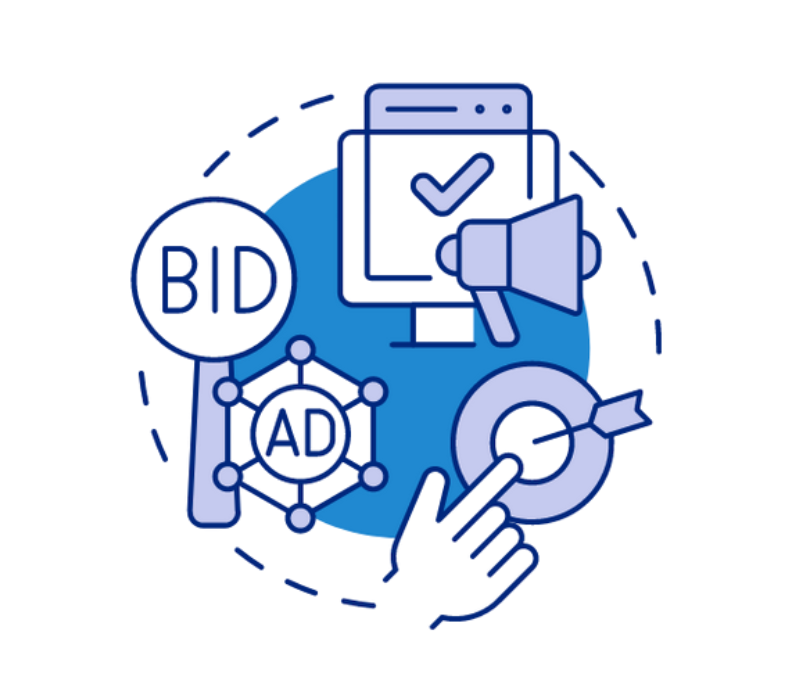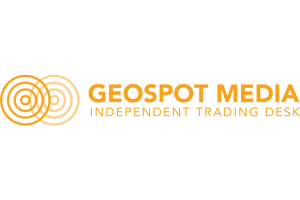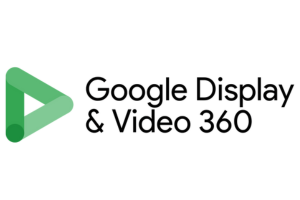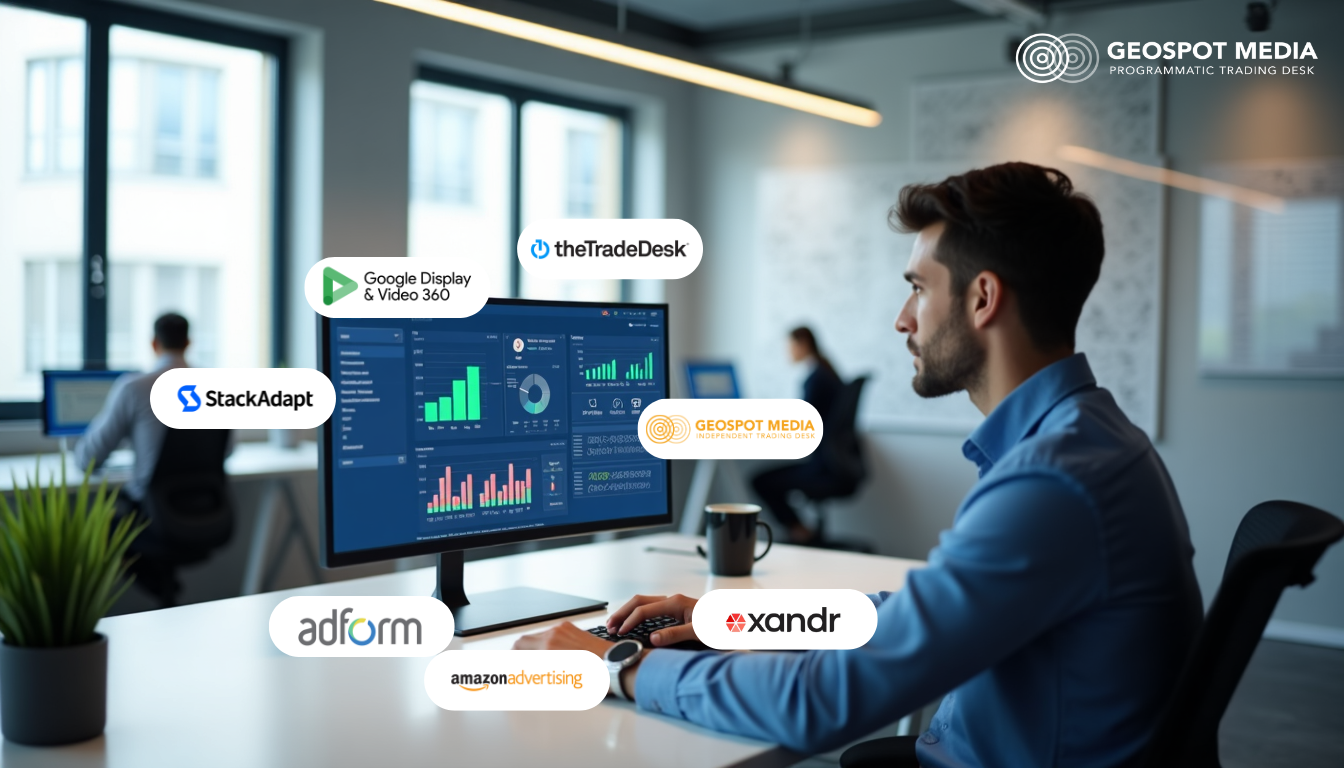Selecting the Best DSP for You: Expert Guide for 2025
As programmatic advertising moves approaching $400 billion by 2026, digital advertisers must choose the best DSP systems. Demand-side platforms form the basis of automated ad buying that, via real-time bidding capabilities and customized audience reach, improve campaign performance.
Choosing among DSP providers gets more difficult every. While Criteo runs about 1.2 billion advertisements annually, the Trade Desk has developed over 225 premium relationships. This article dissectes the top demand side platforms available in 2025. It guides marketers in selecting a platform depending on their particular needs, financial constraints, and campaign objectives.
Understanding DSP Platforms in 2025
Demand-side platforms (DSPs) have substantially changed digital advertising. The market will reach unprecedented growth by 2032. Advertisers need more efficient ways to purchase and optimize digital ad inventory. Understanding these sophisticated platforms helps companies stay competitive in the digital world.
What is a demand-side platform?
A demand-side platform is an automated software system that lets advertisers buy digital ad inventory across multiple ad exchanges through a single interface. DSPs act as a technological bridge between advertisers and publishers. They transform what used to be a manual, time-consuming process into milliseconds of automated decisions.

The fundamental elements of a DSP consist in:
- Bidding engine that, in real-time bidding auctions, bids on ad inventory
- Supply-side relationships with platforms and ad exchanges
- Data management platforms (DMPs) among other data processing tools
- Campaign design and management
- Reporting database for analytics of performance
- Track campaigns to gather performance data.
These sites apply real-time bidding (RTB) technology. Before a webpage loads, advertisers can evaluate available ad impressions, ascertain their value, and create automatic placing bids. Using contextual data, behavior, and demographics, DSPs provide advertisers great targeting power to reach particular populations.
How DSPs have evolved since 2020

The DSP market has grown remarkably since 2020. The global DSP market started at $21 billion in 2022 and will reach $228.40 billion by 2032. This represents an impressive CAGR of 27.3%. The growth has surpassed earlier projections that estimated the market would reach only $11.1 billion by 2025.
Privacy-first approaches have reshaped DSPs because of cookie deprecation and stricter regulations. Platforms have developed new targeting methods that balance personalization with user privacy. Industry experts note, “Instead of anchoring on the past, when teams embrace the benefits of probabilistic methods paired with deterministic ones, they will have a clearer path to scale and performance”.
Key Features to Look for in Top DSP Providers
You must choose the correct demand-side platform based on certain characteristics that complement your advertising objectives. Advanced capabilities define the top DSP platforms for 2025. These tools enable advertisers more control of their digital advertising expenditure and help to maximize campaign success.

Real-time bidding capabilities
Real-time bidding (RTB) is the life-blood of programmatic advertising. It allows trade of digital ad inventory in milliseconds both for buyers and sellers. Users of a website or mobile app trigger RTB to perform quick auctions. At these auctions, advertisers fight for the accessible ad space. Together in this process are supply-side, demand-side, and ad exchange platforms.
Usually occurring under 100 milliseconds, RTB transactions occur at amazing speeds. Before bidding, this fast processing allows advertisers to review every impression using user data. The ad of the winning advertiser appears immediately on the publisher’s page.
Leading DSP providers use smart bidding algorithms that learn from every auction to get better results. These systems set the optimal bid amounts by considering user context, time of day, device kind, prior data. With this intelligence, advertisers can cut wasted impressions. They keep fraud risk low by showing targeted audiences adverts. Learn More
Audience targeting options
The best DSP companies stand out because of their advanced audience targeting features. Modern platforms let you target audiences in many ways:
- Demographic targeting (age, gender, income, education level)
- Behavioral targeting (browsing history, past purchases)
- Contextual targeting (website content relevance)
- Geographic targeting (location down to city level)
- Device-specific targeting (manufacturer, operating system)
- Retargeting (visitors who didn’t convert)
These platforms excel at using both first-party and third-party data to optimize campaigns. Leading platforms now use AI-powered contextual keyword targeting. This puts ads on pages that contain or relate to targeted keywords. You get more flexibility with freeform keywords compared to category-based targeting.
The best DSP platforms in 2025 support both cookie-level retargeting and new privacy-first targeting methods. They also let you cap frequency and schedule ads by time of day to make advertising personal.
Cross-channel campaign management
Cross-channel campaign management matters more than ever. Customers now use six marketing channels to make purchase decisions, up from just two channels 15 years ago. About 90% of customers want consistent brand interactions on all their channels.
Top DSP platforms give you one interface to manage campaigns across display, video, mobile, and Connected TV (CTV). This stops data from getting trapped in silos that block clear views of customer trips.
The main goal is to send timely, consistent, and relevant messages on all brand touchpoints. Top DSP providers do this with reliable customer data integration. They use smart automation and flexible marketing tools to create personal experiences based on customer needs and priorities.
Reporting and analytics tools
Detailed reporting sets the best DSP providers apart from average ones. Advanced analytics help advertisers track KPIs, understand audience insights, and fix campaigns with immediate updates.
The best DSP platforms show performance metrics clearly with visualization tools. You can see performance analysis, conversion paths, household metrics, and more. These insights reveal which touchpoints lead to conversions and help make smarter investment choices.
Top demand side platforms let you generate reports based on your criteria. You can create custom metrics for specific business goals. They also connect with other marketing systems through APIs for easy data sharing.
Look for DSP reporting tools that offer both quick-view dashboards and detailed data logs. This combination helps you make strategic decisions while keeping full visibility of campaign performance.
Best DSPs for programmatic advertising – Key Features and Why its Best for you
DSP platforms differ greatly in their features, pricing, and specializations. These differences play a crucial role in determining which platform best matches specific marketing goals. Advertisers need to understand these subtle variations to pick the right technology partner for their programmatic campaigns.

GeoSpot Media brings its A-grade as an independent trading desk, linked to 10+ DSPs and 35+ worldwide ad exchanges tracking billions of impressions across display, mobile, video, and native formats. It leverages data-driven tactics to keep brands ahead and maximizes campaigns rapidly using Real-Time Bidding, therefore shining at providing outcomes. Launched in 2019 from Singapore, it appeals to companies seeking precise, multi-channel reach with expected low cost. Companies seeking tailored programmatic solutions with a focus toward measurable outcomes may find GeoSpot Media fit.
Find out how a DSP differs from an independent trading desk? Know More

DV360 shines because it combines smoothly with Google’s ecosystem and provides access to premium inventory through Google Ad Manager. The platform does an exceptional job with cross-device targeting and advanced frequency management. This enterprise-grade solution needs a substantial investment – managed service fees start at $150,000 per year. DV360 works best for advertisers who already use Google’s marketing stack, especially when running complex multi-channel campaigns that need sophisticated audience segmentation.

The Trade Desk leads the pack of independent platforms and gives brands and agencies exceptional transparency and customization options. The platform reaches audiences through display, video, audio, and CTV channels with more than 225 premium partnerships including Hulu, Disney, and Spotify. Its proprietary Koa AI makes campaign optimization automatic, while the cookie-free Unified ID 2.0 solution takes care of privacy concerns. The Trade Desk suits sophisticated advertisers who want complete control, but they need to spend at least $50,000 monthly.

Adform stands out with its complete advertising platform that brings together DSP, DMP, and ad server capabilities. This all-encompassing approach eliminates data silos and provides smooth campaign management. The platform serves 25,000+ global clients and excels at European inventory access and GDPR compliance tools. Its easy-to-use interface makes it perfect for mid-size advertisers who need complete solutions without enterprise-level complexity.

Microsoft acquired Xandr Invest recently. The platform specializes in premium video and CTV inventory access with more than 2,500 audience segments and powerful contextual targeting capabilities. Advertisers can build custom marketplaces with preferred publishers using its Invest Curate tool. Xandr excels for advertisers who prioritize brand safety and premium placements, though it takes longer to learn than some competitors.

Amazon DSP gives advertisers unique access to the e-commerce giant’s massive first-party shopper data. This includes purchase history, browsing behavior, and Prime membership status. The platform needs either a $50,000 minimum managed service spend or a $35,000 self-service minimum, but it delivers exceptional e-commerce retargeting capabilities. Retail brands targeting purchase-ready consumers across Amazon properties and third-party sites see remarkable results with this platform.

StackAdapt leads the mid-market segment with its user-friendly interface and lower minimum spend requirement of $25,000. The platform specializes in native advertising while supporting display, video, CTV, and audio formats. Its machine learning algorithms optimize campaigns automatically. In-house teams looking for sophisticated programmatic capabilities without enterprise complexity will find StackAdapt’s resilient retargeting capabilities and well-laid-out dashboard perfect for their needs.
How to Evaluate DSP Companies Based on Your Needs
Picking the right DSP company needs a careful review based on your business needs. A well-planned framework helps you find platforms that give the best results without wasting money.

Assessing your advertising goals
Your programmatic advertising goals need to be crystal clear before you pick any platform. Are you focusing on brand awareness, website traffic, or direct sales? The tools you’ll need from top DSP platforms depend on these goals. E-commerce brands that want conversions need different tools than B2B companies looking for leads. The wrong match between your goals and platform choice can lead to higher costs as time goes by.
Budget considerations
DSP providers have very different pricing models. Amazon DSP asks for about $50,000 minimum spend for managed services. Other platforms let you start with less if you manage things yourself. You’ll need to look at:
- Fee structures (percentage-based vs. fixed)
- Technology fees (usually a percentage of media cost you’ll see during setup)
- Management services costs (extra percentage fees if you want account support)
Spending more on media often means lower percentage fees. Make sure to ask for a full cost breakdown, including any hidden costs for data management or creative optimization.
Technical requirements and integration capabilities
Your marketing systems work better when they combine smoothly with your DSP. Platforms that connect naturally with your Customer Data Platforms (CDPs) or Data Management Platforms (DMPs) give you better data and let you target audiences more precisely. Setting up these connections takes time and happens in stages – from checking documentation to development and testing. You might also want a platform that lets you switch between managed and self-service options as your team grows.
Support and service expectations
The top demand side platforms come with full support teams, including account managers, tech help, and training materials. You can choose between platforms that handle everything or those where you do most of the work yourself. Teams new to programmatic advertising really benefit from having helpful support staff to fix problems and make campaigns work better. The platform’s update schedule and quality matter too – they show if it’s built to last.
Implementation and Optimization Strategies
A successful programmatic campaign needs good planning and constant improvements. You must be precise when you launch campaigns on top DSP platforms. This helps maximize your return on investment.

Setting up your first DSP campaign
Your DSP campaign starts with clear goals and KPIs. The campaign structure has three main parts: orders (overall campaigns), line items (ad groups), and creatives (the actual ad content). Advertisers need to set campaign goals like awareness, consideration, or conversion. They also need to specify dates and budget limits.
Break down your audiences based on how they behave, their demographics, and what interests them. Smart audience segments help you create messages that strike a chord with specific groups. Adding your first-party data makes targeting more accurate by combining your customer insights with programmatic features.
Testing and optimization best practices
Your campaigns need constant fine-tuning to work better. A/B tests of different creative versions show which elements connect best with your audience. Advanced DSP platforms use rules to adjust bidding strategies based on how well things are working.
Key optimization strategies include:
- Using audience insights and real-time data to make smart changes
- Testing and improving targeting options based on results
- Adding pre-bid filters to ensure good performance across placement types
- Setting frequency caps (usually 7x per day) to avoid ad fatigue and wasted money
Package-level optimization lets algorithms spread budgets among placements based on results. Top DSP platforms automatically give more budget to placements that work best when even pacing is selected.
Measuring performance and ROI
You need to track both specific campaign metrics and overall performance indicators. Brand awareness campaigns use different success measures than conversion-focused ones. Awareness campaigns look at impressions and engagement as main indicators. Conversion campaigns focus on return on ad spend (ROAS) and cost per acquisition (CPA).
The best DSP companies offer unified dashboards that show performance across many dimensions. These analytics help advertisers see the customer’s path from first impression to final conversion. A detailed measurement system should track viewability, prevent fraud, and measure across devices to show the true campaign results.
Future Trends Shaping Demand Side Platforms
DSP platforms’ technology keeps advancing rapidly, and innovation continues to alter the map of how advertisers reach their audiences. The industry adapts to new consumer behaviors and regulatory changes. Several key trends will shape the next generation of top DSP platforms.

AI and machine learning advancements
Artificial intelligence has become the foundation of modern demand-side platforms. AI now serves as the core engine that drives programmatic optimization rather than just being a feature. AI-powered systems can exploit huge amounts of data much faster than humans and provide analytical insights for real-time decisions. Top DSP providers’ sophisticated algorithms now:
- Identify high-performing inventory instantly to optimize bidding strategies
- Use detailed data to create hyper-targeted audience segments
- Predict campaign results and adjust tactics dynamically to maximize ROI
Leading DSPs implement specialized AI approaches that differ from general-purpose models. They chain multiple models together, and each model serves a specific purpose in the optimization sequence. This targeted approach shows impressive results – platforms report CPA improvements of 33-39% compared to alternatives.
Privacy-first advertising approaches
Privacy-centered strategies have become essential for DSP companies as third-party cookies phase out. Forward-thinking platforms develop affordable solutions that maintain targeting precision while protecting user privacy. These solutions include:
- Advanced contextual targeting capabilities that analyze page content instead of user data
- Clean room technology enables secure data collaboration without exposing personal information
- Cohort-based advertising models group users by interests rather than individual behaviors
Amazon DSP demonstrates this fundamental change. It prioritizes both reach and privacy through AI-powered targeting that works well without traditional identifiers. Technologies like federated learning and differential privacy help brands learn about trends while protecting user information.
Emerging ad formats and channels
The programmatic ecosystem expands beyond traditional display advertising in a variety of formats. Connected TV represents one of the fastest-growing channels. DSP platforms develop specialized capabilities to capture this expanding market. Digital out-of-home advertising gains momentum as DSPs help advertisers reach customers at the right moments in physical locations.
Audio advertising creates another big opportunity. Global podcast listenership will reach 1.6 billion by 2029. Leading platforms already incorporate these channels into omnichannel strategies. This allows advertisers to deliver consistent messages across an increasingly fragmented media landscape.
Conclusion
DSPs are now crucial tools that drive digital advertising success. These smart platforms help advertisers run their campaigns quickly and offer advanced targeting with immediate improvements. The market will grow to $400 billion by 2025, which shows how important these tools have become in advertising technology.
Different platforms cater to specific advertiser needs. Big players like Google Display & Video 360 and The Trade Desk work best for large-scale campaigns. StackAdapt and Adform give mid-market advertisers good features at reasonable prices. Some platforms focus on specific areas like mobile, B2B, and native advertising.
Companies must think over their business goals, technical needs, and budget limits to succeed with DSPs. The right setup and constant fine-tuning make campaigns perform better. DSPs’ future looks bright with AI improvements, privacy-focused answers, and new channels like CTV, audio, and digital out-of-home advertising.
Smart advertisers choose platforms aligned with their goals and scalable for growth. An independent trading desk like GeoSpot Media operates separately, delivering unbiased, technology-driven campaign management. We help organizations achieve advertising objectives through automated strategies and precise audience targeting. Our professional team is well-connected to leading DSPs, ensuring seamless integration and optimal results without overwhelming you with options—reach out to us for expert guidance.





Post Comment